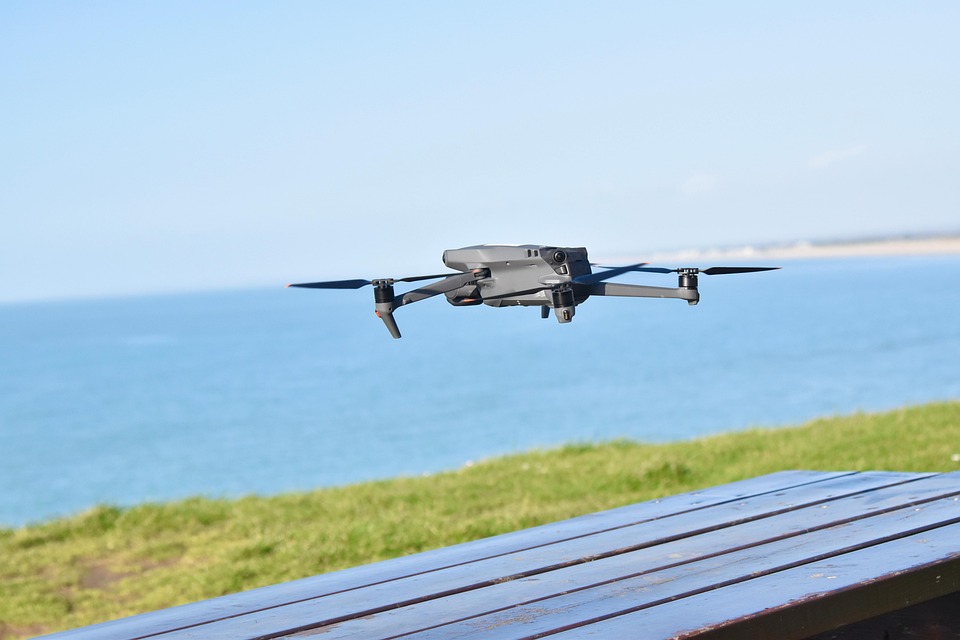Mechatronics Drones: Merging Mechanics and Electronics for Unmatched Performance
Introduction
The rapid advancement in technology has led to the emergence of mechatronics, an interdisciplinary field that combines mechanics, electronics, computer science, and control engineering. Among the most notable applications of mechatronics is the development of drones—unmanned aerial vehicles (UAVs) that leverage sophisticated systems to operate autonomously. This article delves into the intricate world of mechatronics drones, focusing on how the integration of various engineering disciplines fosters unmatched performance across multiple industries.
The Evolution of Drones
Drones were initially developed for military applications, serving as reconnaissance and combat tools. However, their versatility has led to widespread civilian use, including delivery services, agriculture, environmental monitoring, and entertainment. The evolution of drones has been closely tied to advancements in mechatronics, allowing for improvements in flight stability, navigation, payload capacity, and autonomy.
The Core Components of Mechatronics Drones
1. Mechanical Structure
The mechanical structure of a drone comprises its frame, propulsion system, and control surfaces.
Frame Materials
Modern drones often utilize lightweight materials such as carbon fiber and aluminum alloys. These materials offer an optimal strength-to-weight ratio, crucial for enhancing flight efficiency and endurance.
Propulsion Systems
Propulsion systems can be broadly categorized into fixed-wing and rotary-wing designs. Fixed-wing drones are akin to miniature airplanes, providing long-range capabilities but requiring runways for takeoff and landing. Conversely, rotary-wing drones, commonly known as quadcopters, are more versatile with vertical takeoff and landing (VTOL) capabilities, making them suitable for urban environments.
2. Electronic Systems
The electronic systems in a mechatronics drone are vital for its operation and can include:
Flight Control Systems
Flight control systems use sensors, actuators, and embedded software to maintain stability during flight. Inertial Measurement Units (IMUs), GPS receivers, and barometers work together to provide real-time data on orientation, altitude, and velocity.
Communication Systems
Communication systems are essential for remote piloting and real-time data transmission. These often involve radio frequency (RF) modules, GPS data links, and sometimes advanced cellular networks for urban operations.
3. Software Integration
The software aspect of mechatronics drones involves programming algorithms that enable autonomous flight, data collection, and processing.
Control Algorithms
Control algorithms serve as the brain of the drone, interpreting sensor data and making split-second decisions. Common algorithms include PID (Proportional-Integral-Derivative) controllers, Kalman filters for sensor fusion, and machine learning techniques for obstacle avoidance and path planning.
User Interfaces
User interfaces (UIs) allow operators to interact with drones easily. These can range from simple remote controls to sophisticated ground control stations that offer live telemetry, 3D mapping, and mission planning tools.
The Mechatronics Advantage
Enhanced Performance
The integration of mechanics and electronics gives drones several advantages, including:
Improved Stability and Control
Advanced gyroscopic stabilization systems, combined with superior aerodynamics, enhance a drone’s flight performance. This results in smoother operations, which are crucial for applications such as aerial photography or precision agriculture.
Greater Autonomy
With sophisticated software and sensors, mechatronics drones can perform complex tasks autonomously, reducing the need for human intervention and increasing efficiency.
Multi-Functionality
Modern drones can be equipped with a multitude of sensors, allowing them to perform various tasks simultaneously. For instance, in agriculture, drones can monitor crop health, perform soil analysis, and even dispense fertilizers—all from a single platform.
Applications of Mechatronics Drones
1. Agriculture
Drones are revolutionizing agriculture through precision farming techniques. By using NDVI (Normalized Difference Vegetation Index) cameras, farmers can obtain detailed insights into crop health, enabling them to optimize resource use and increase yields.
Crop Monitoring and Analysis
Drones equipped with multispectral sensors can identify plant stress, pests, and diseases much earlier than traditional methods, allowing farmers to take timely action.
2. Delivery Services
Companies like Amazon and Zipline are pioneering the use of drones for delivery services. Drones can bypass road traffic and deliver goods rapidly, which is particularly beneficial in emergency situations, such as delivering medical supplies to remote regions.
3. Environmental Monitoring
Mechatronics drones equipped with sensors can monitor various environmental parameters, such as air quality, water quality, and wildlife populations. This data is invaluable for conservation efforts and environmental research.
Disaster Response
In disaster response scenarios, drones can provide real-time assessments of affected areas, helping agencies coordinate rescue operations more effectively.
4. Infrastructure Inspection
Drones are increasingly being used for inspecting infrastructure, from bridges to power lines. They can cover large areas in a short time and collect high-resolution data, significantly reducing the time and risk associated with manual inspections.
5. Entertainment and Media
Drones have transformed the film and photography industry by providing unique aerial perspectives. Their agility and maneuverability facilitate creative shots that were once difficult or impossible to achieve.
Challenges and Future Directions
Regulatory Issues
The rapid growth of drone technology has outpaced regulation, leading to concerns regarding air traffic management, privacy, and safety. Regulatory bodies such as the FAA and EASA are working to establish guidelines to ensure safe drone operations.
Technological Limitations
Despite advancements, several technological challenges remain. Battery life, payload capacity, and sensor accuracy require ongoing research and development.
Battery Energy Density
The limitation of current battery technology caps flight time and payload. Researchers are investigating alternatives like fuel cells and solar power to enhance drone endurance.
Cybersecurity Concerns
As drones become more connected, they are susceptible to cyber threats. Ensuring robust cybersecurity measures is vital to prevent unauthorized access and potential malicious uses of these technologies.
Conclusion
Mechatronics drones represent a convergence of mechanical engineering, electronics, and software systems, enabling unparalleled performance in various applications. As this technology continues to evolve, it promises to redefine industries, enhancing efficiency, safety, and innovation. Addressing the challenges of regulation, technology limitations, and cybersecurity will be crucial to unlocking the full potential of mechatronics drones in the years to come.
This overview of mechatronics drones highlights their importance and versatility in a modern context. For further reading and insights, refer to contemporary studies and conferences focused on the future of UAV technologies.


























Add Comment